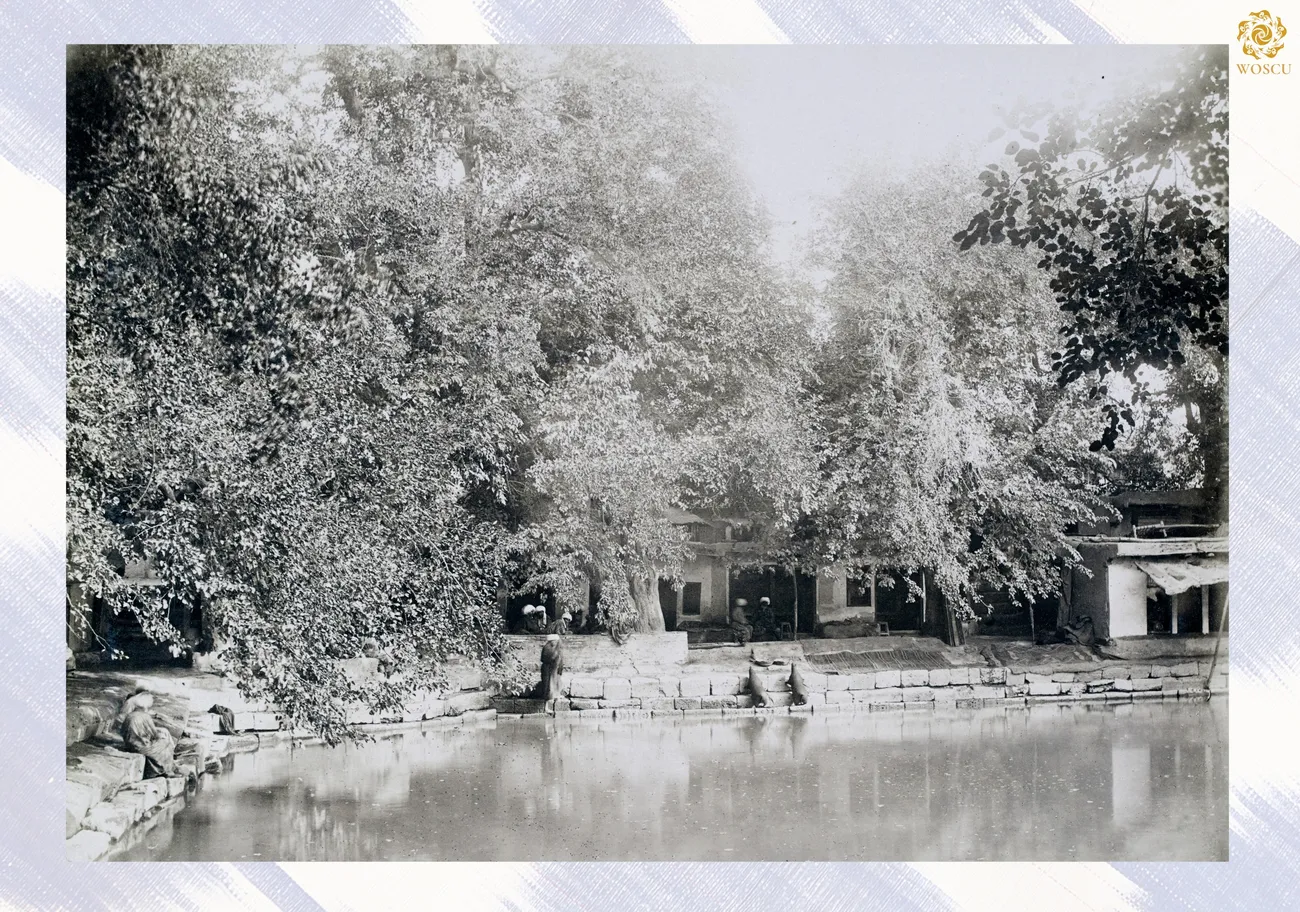For example, S.M. Dudin, in his report on the trip of 1900-1902, wrote: “A lot of the beauty to streets is given by numerous mosques <…> scattered throughout all parts of the city. Not to mention the originality of their forms, often very beautiful, they bring into the boring picture of the streets the groups of trees surrounding the inevitable hauzes at mosques — the ponds in which the faithful have their ablutions before prayer, and from which they drink and take water to water the streets. The hauzes of such cities as Samarkand and Bukhara are extremely picturesque, since they are almost all more than one hundred years old, and the trees that surround them reach enormous proportions. In almost every mosque and madrasa in front of the cells of mullahs you can find garden-beds and pots (gultubak) with plumed cockscomb, bindweed, ocuimum, iris, marigold, etc., and among the Chinese elms, mulberries and oriental planes there are carefully cultivated pomegranates and almond trees. There is always silence and shadow. The street noise, moderated by foliage, is hardly heard here; it is replaced by the monotonous reading of the Quran or the noisy cries of children from the school at the mosque.”
You can learn more about the topic in the book-album “Uzbekistan in historic photographs of the 19th - early 20th centuries in the collections of Russian archives” (Volume XXXVII) in the series “Cultural Legacy of Uzbekistan”.
The general sponsor of the project is the oilfield services company Eriell-Group.

